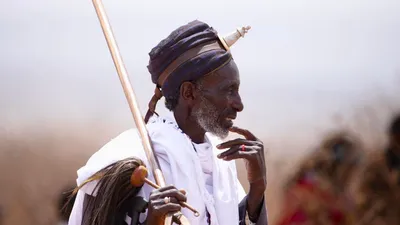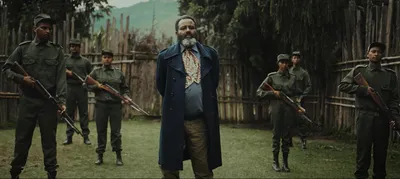Protocols Of A Traditional Oromo Marriage Proposal

Marriage is one of the most important rites of passage to Africans and most societies around the world. Every society throughout history has had its way of asking for their partner’s hand in marriage. The Gadaa System, the indigenous egalitarian social-political system through which Oromos lived under for thousands of years, similarly has an outlined procedure that must be followed for a marriage proposal to be accepted. These procedures ensure that the marriage is successful and prosperous.
With the help of a Borana elder, Obbo Liiban Halake, who volunteered to be interviewed on various cultural subjects, supplemented by my own personal observation and experience as a Kenyan Oromo, this article is an attempt to illustrate the requirements for how an Oromo marriage proposal is conducted.
In the Oromo tradition one will have to look for three things in their future partner to know whether they are traditionally suitable for each other. These are: Is your partner your Eessuma? What Luba/Gogeessa does she or he belong to? Are they your Sumsuma?
Eessuma
In other parts of Oromia, Eessuma might mean a maternal uncle (your mother’s brother) but among the Borana Oromo, it refers, beside your maternal uncle, to your mothers clan and lineage. Oromos trace their lineage from their paternal side, meaning you’ll claim the clan or tribe of your father. For example if the father is Oromo and the mother is non Oromo, then the child will become an Oromo. As such, according to the Gadaa system, it is advisable to marry a partner from the clan which your mother came from. This helps in multiplication of your descendants with good health because your marriage partner is not from your clan or ancestry.
The Gadaa System is strictly against marriage within the same clan; in fact, it is considered an abomination to marry from the same moiety let alone your clan, as marrying from among your own clan (gosa) is considered like marrying your own sibling. The Oromo divide themselves into a pair of five moieties, which are further divided into clans and sub clans. The tribe I belong to, the Borana, are part of the Sabbo and Goona moiety. The Sabbo or Sabbo sadeen further divide into Digalu, Maxxaarri and Karrayyu clans. These three clans that make up the Sabbo Sadeen are like siblings to each other. Whereas the Goona or Goona baldhaa branch further divides into two sub branches: Aroorressa and Fuleelle. Aroorressa has clans like Warra Jidda and the Fuleelle sub branch has clans like Noonnitu and Hawaxuu.
Luba
The Gadaa System has five major parties called Luba or Gogeessa that rule and govern the people each in their due time. These five parties represent the clans and sub-clans of the whole tribe. For example, the five parties of the Borana Oromo Gadaa System are:
Gogeessa Adii Doyyo,
Gogeessa Boru Galma,
Gogeessa Liiban Kusee,
Gogeessa Areero Geedo and
Gogeessa Bulee Dabbassa.
Each party rules for eight years before passing it on to the next party in line. By multiplying the eight year rule with the five major parties, each party will rule forty years after their reign comes to an end. Luba is the genealogical era of your clan’s and sub-clan’s rule of the time you were born or nearly before you were born. The name of the Luba is named after the Abba Gadaa in power of that era.
For example my Luba is Luba Jiloo Aaga (Jiloo Aaga Adii Doyyo), the Abba Gadaa from the first party of Gogeessa Adii Doyyo. If a girl comes from the same Luba as mine, in this case Luba Jiloo Aaga or comes from the Luba of the same Gogeessa (party) as mine, in this case Luba Aaga Adii or Luba Adii Doyyo, then I’ll automatically know that I should not marry her because she comes from the same clan as myself or the same sub-clan and hence makes me related to her.
If she’s from Luba Jiloo Aaga then I’ll regard her as my sister; if she’s from Luba Aaga Adii then she’s supposed to be considered as my paternal aunt (adaada); and if she’s from Luba Adii Dooyyo then I am supposed to call her grandmother (akkoo).
Science says couples of the same genes, bloodline or family are prone to sire a physically disabled child. This is one of the reasons why there are very few cases of physically disabled people among the Boranas and Oromos at large, because of these rules outlined in the Gadaa system.
Sumsuma
According to Obbo Liiban Halake, traditional oral legend has it that, long ago, God (Waaqa) used to be close to human beings and when he went further upwards to the heavens, He created Sumsuma so that the respect and fear of the Lord does not erode from humanity.
Among the Oromo, every clan has another clan that they regard as their Sumsuma, whom they are supposed to highly respect. “Yo Sumsuma kee hin kabajinii, Waaqalle hin sodaattu jechuudha,” Obbo liban, adds. (If you don’t respect your Sumsuma then it means you also don’t fear God.)
Since your Sumsuma should be highly respected and honored, marrying into your Sumsuma is held in high regard. It is also believed that it will be a marriage filled with prosperity and also grow your descendants, as the partners will live with high regard to each other.
After tracing your partners lineage and ancestry using the above mentioned requirements, the groom to be can now take his “Daraara” to his intended bride. The First and foremost step after tracing your partner’s lineage, is taking Daraara to the home of the person you intend to marry.
Daraara
From all the plants that produce thorns and the plants that yield products, coffee and tobacco are considered by the Oromo as blessed plants, or “Mukaa eebba qabu,” as Oboo Liiban puts it. After tracing the spouse-to-be’s lineage using Eessuma and Luba, one can now take these two products to the intended bride’s home as an informal submission of a marriage proposal. It is this first informal submission of a marriage proposal that is called the Daraara.
If the family accepts your Daraara, they will tell you to come with elders of your clan to officially ask for her hand in marriage; this official proposal is known as “kadhaa.” One is obviously supposed to come back bearing gifts, for the bride’s father, mother and maternal uncle (to represent the clan of the mother as the Eessuma.) Once your Daraara gets accepted no other person’s proposal will be accepted unless you, the first person, calls it off because it is as much of an engagement as it is a proposal.
After coming with the elders of your clan, one will once again come another day to ask or set a suitable wedding day. The bride to be’s family takes one through all this process to test one’s patience; they might even make the process longer by telling you to come back another day once or twice.
After you’ve successfully completed these steps, one can now plan for a wedding day. A person is advised to marry in a good season that is not dry and hot.
Oromos just like any other African community also had fixed marriages in the past; an Oromo girl could receive a marriage proposal from as early as 10 years old but she would not be married off, touched or leave her parental home until she became a matured lady.
These rules and guidelines of marriage proposal is still followed up to this day by Oromos both living in Ethiopia and Kenya. My sisters’ and brother’s marriage followed these steps and hopefully, I will also follow the same traditional customs when the time comes.
Although it is slowly eroding due to the influence from Abrahamic religions and anti-indigenousness constitutional laws about marriage, it is important to keep in mind that these kinds of lifestyles are part of what make our rich culture have its identity. Kenyan Oromos have found a way of blending their religion and traditional values without conflicting any of the two. They follow their traditional ways and steps of marriage but ‘tie the knot’ in a religious manner.
Our culture is what defines us, if we abandon our culture it means we deny who we are and where we come from. These small customs that we ignore are what made the Oromo a vast, strong and healthy nation. I hope that Oromos, wherever they may be in this world, do not let these traditional rules and customs be a forgotten memory. As the Jamaican-born, Pan-African black nationalist author, Marcus Garvey, warns, “A people without the knowledge of their past history, origin and culture is like a tree without roots.”
We need your support
We trust you found something of value in this article. If so, we kindly ask you to consider helping Curate Oromia continue its work.
If you believe in the importance of independent voices and honest reporting, we invite you to support our efforts through our GoFundMe campaign.
Every contribution, however small, goes directly to our writers and the expansion of our reach.
Thank you for your support.



